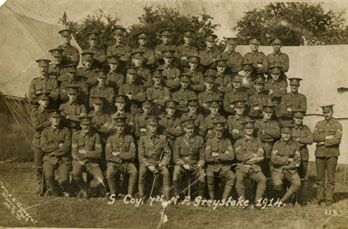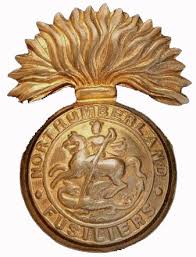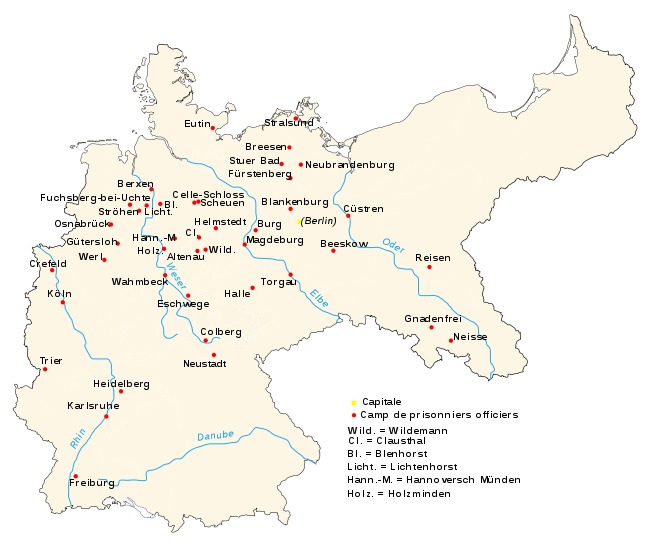BERWICK ADVERTISER, 30 APRIL 1915
WOOLER
Red Cross- Lady Boyle has acknowledged, having received a box of bandages, dressings, clothing and chocolate from the Wooler Women’s Voluntary Aid Detachment for Red Cross Hospitals in Serbia. Mrs Tower Robertson, Berwick, has acknowledged another parcel of comforts for soldiers from the members of the Wooler Girl’s Friendly Society.
The Local Territorials

The Local Territorials attached to the 7th Northumberland’s left for an unknown destination last week. Letters have been received, from which it appears they have arrived safely in France, and will no doubt find themselves in the fighting line before long. Let us hope that they will render a good account of themselves, and uphold the honour of Northumberland, returning safe home when the Huns have been satisfactorily disposed of, and that complete victory may crown the efforts of the Allies and that this may be speedily accomplished will be the fervent wish of all.
FIRST CASUALITY (sic) IN THE 7th N.F.
Berwick Territorials Wounded.
More casualties were reported on Thursday amongst the local troops who left the North about a week ago, and took part in the battle of Ypres soon after they arrived at the front.
We learn that the Northumberland Territorials have taken an active part in the fighting, and amongst the battalions engaged were the 4th, 5th, 6th and 7th Battalions Northumberland Fusiliers, the 5th 7th and 8th Battalions of the Durham Light Infantry, and the 4th Yorkshire Territorials.
From word received from the front in Berwick on Wednesday, it is quite evident that the Berwick companies of the 7th Northumberland Fusiliers, have received their baptism of fire. Mrs Egan, 23 Church Street, Berwick, has received a field postcard from her son, Private H. S. Egan, No. 1 Company, 7th N.F., saying that he was wounded and in hospital. Private Egan is a son of the late Sergeant James Egan, Royal Field Artillery, who, after twenty years’ service in the Army, came to reside in Berwick. Mrs Buglass, 35 Church Street, Berwick, has also received a postcard from her son, Corporal James Buglass, No. 1 Company, 7th N.F., saying he is wounded and in hospital. The 7th N.F. left for the front a week past Tuesday, and have been put into action very soon.

Since writing the above information has been received by Mrs Davidson, 37 Dock View, Tweedmouth, that her oldest son, Pte. A. Davidson, 7th N.F., has been wounded. Mrs Davidson’s second son, Pte. T. Davidson, is also serving in the same regiment. Mrs Waite, 9 Tweedside Terrace, Tweedmouth, has also received information that her son, Pte. Thomas Waite, has been wounded in the leg. Pte. Waite was employed in the office of Mr H. R. Peters, solicitor, Berwick, before the outbreak of war.
Sir E. Grey’s Cousin in Solitary Confinement
Amongst the British officers who have been placed in prison in solitary confinement by the Germans, as a reprisal for the treatment of the German submarine crews, is Captain Robin Grey, who is a cousin of Sir Edward Grey, and was formerly Conservative candidate for the Bishop Auckland Division. He was reported as missing in October, and a prisoner at Torgau in November. He was decorated in September with the Legion of Honour for distinguished service in the field.

Another officer who has been placed in solitary confinement is Lieut. Alaistair Robertson, Gordon Highlanders, son of Mr W. Robertson, Cheltenham. Lieut. Robertson is nephew of Major Tower Robertson, Tweedmouth, and of Miss A. Henderson, Ravensdowne, Berwick. He was twenty-two years of age on the day he was arrested.



